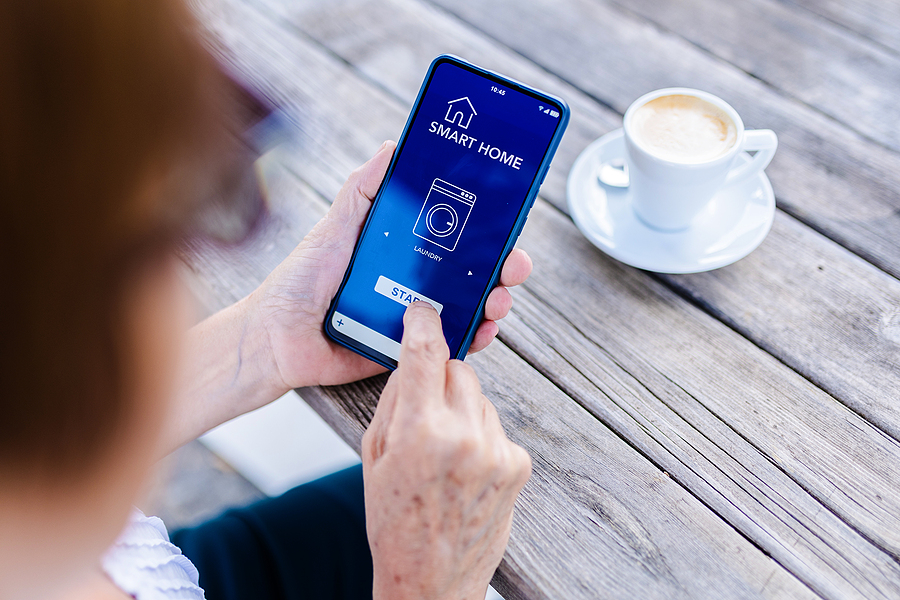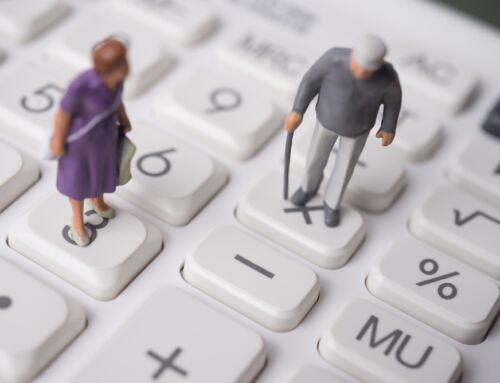We are in a golden age of sorts when it comes to technology. It seems like nearly every day, a new tech tool or service launches, designed to make our lives easier. And increasingly, these advancements — many of which involve artificial intelligence (AI) and voice activation — are geared toward seniors. Let’s take a look at some of the latest so-called “smart aging” technologies and how they are being incorporated into seniors’ lives.
Personal voice assistants
The increasingly popular personal voice assistant (PVA), such as Amazon’s Echo line (which typically uses the wake-up phase, “Hey Alexa”), offers easy-to-use voice-control technology, which also incorporates artificial intelligence. These devices can be particularly helpful for seniors who might have trouble with their vision or dexterity.
A study out of University of Nebraska-Lincoln has found a number of uses for this PVA technology for seniors, including loneliness reduction. Some senior living communities are even incorporating PVA devices throughout their campus to improve the resident experience.
For example, Atria Senior Living is rolling out Amazon Echo Shows — which include a touchscreen as well as Echo’s typical voice-activated technology — within a pilot group of their communities. Using just their voice, residents of these communities will be able to ask Alexa to do a number of useful tasks such as:
- Adjust the lights, blinds, and thermostat in their home
- Make phone calls and video calls to friends and loved ones
- Learn what’s on the dining menu and calendar of events for the day
- Set reminders to take medication
- Make phone calls or message community staff members and neighbors
- Summon help in case of an emergency
In addition, the community’s staff can send messages into residents’ homes about community happenings or other important information. These can be in the form of voice messages that Alexa reads out loud, or it can be visual cards that display Echo Show screen.
>> Related: The CCRC of the Future: Technology
Smart home technology
“Smart home” technology is another area that is rapidly expanding with new ways to keep seniors safe, happy, healthy, and living independently for longer.
According to data from AARP, at least two-thirds of older adults (age 70+) own smartphones, which is fortunate since most smart home devices must be linked to Wi-Fi internet and are controlled using a smartphone, computer, or tablet. Some of these devices also can be operated using a PVA like Alexa.
- Among the most popular of the smart home devices is the video doorbell. These doorbells’ cameras are typically motion- and/or ring-activated and are a great way to monitor activity at your door. They also add a layer of security with the ever-growing issue of “porch pirates” stealing packages from people’s doorsteps!
- Smart lighting is another popular smart home technology. These devices and lightbulbs can be motion- or voice-activated, or controlled from a smartphone, tablet, or PVA. Smart lights can aid in home security, illuminating exterior entryways or acting as a lamp timer when homeowners are out of town. They also can help keep seniors with vision problems safe and prevent falls.
- Motion-detecting cameras and sensors can be helpful for seniors’ safety and security as well, and also allow long-distance caregivers to check in on their loved one remotely. Some devices even utilize predictive analytics to identify potential concerns, such as if a person is not moving about their home in their typical pattern.
- Smart appliances can be a time-saver, as well as an energy saver. For instance, smart dishwashers, dryers, and washing machines, which typically also have energy-efficient modes, can be programmed to start at a time of day when electricity is less expensive. They generally have, too. Some models can even send you an alert when the cycle is complete.
>> Related: Here’s Why Smart Home Technology Adoption is Rising Among Seniors
Companion robots
We may have officially entered the era of the Jetsons with the rise of the companion robot. One of the early-to-market products in this category is Mitra “the Trusted Companion” robot, developed by Clearday robotic services.
Mitra has features specially designed as an affordable solution to help care for people with cognitive disorders, like dementia, enabling them to safely stay in their home for longer. Mitra also can be used in a healthcare setting as a caregiving assistant or for telehealth visits — a potential solution to help address the caregiver shortage. Among Mitra’s capabilities are:
- Artificial intelligence
- Autonomous navigation
- 24/7 monitoring by care professionals
- Safety and fall detection and notifications
- Companionship, engagement, and entertainment capabilities
>> Related: How Technology Is Reducing Long-Distance Caregiver Burden
Smart aging innovations that improve seniors’ quality of life
These high-tech advancements are just a few of the ways that technology can make life easier, more enjoyable, and safer for seniors. In some applications, it can even help address the caregiver crisis our nation faces. Taken as a whole, such “smart aging” technology has the potential to improve the quality of life for seniors today and into the future.






